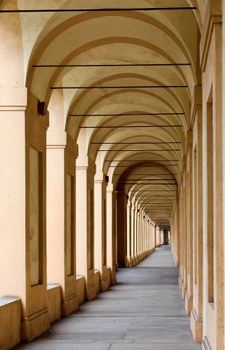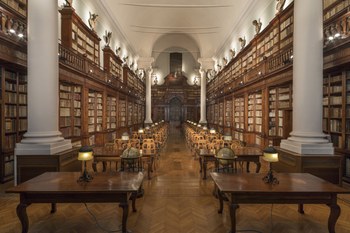Venue

About Bologna
Bologna, the capital of Italy's Emilia-Romagna region, is a vibrant city known for its rich history, medieval architecture, and renowned cuisine. Famous for its portico-lined streets, lively piazzas, and towers like the iconic Asinelli and Garisenda, Bologna offers a blend of historical charm and modern dynamism. The city is also celebrated for its culinary tradition, including classic dishes like tagliatelle al ragù and tortellini.
Tourist information can be found on the Bologna Welcome portal.
Bologna is easily walkable, taking about 40 minutes to cross from one side to the other. If you prefer, you can make use of the city's urban bus network. A single ticket costs €2.30 and can be purchased on board with a credit card. Suggested bus routes are available on Google Maps. Taxi service is also available here (phone number +39 051 4590).

About Alma Mater Studiorum - Università di Bologna
The University of Bologna, one of the oldest universities in the Western world and among the most prestigious in Europe, boasts approximately 95,000 enrolled students across 31 departments and four campuses located in the Emilia Romagna region. It offers 260 degree programs, around 50 PhD programs, and employs roughly 3,300 research staff. The Department of Statistical Sciences "Paolo Fortunati", which will host the conference, is one of the largest statistics departments globally, with over 90 faculty members, around 20 PhD students, and 30 postdoctoral researchers.
Conference Venue
The Conference will take place in the Belmeloro complex of the University of Bologna, in via B. Andreatta 8. Rooms A, P, and Q will host the sessions and are located on the ground floor, where the registration desk and the coffee break area will be placed.
The complex is in the citadel of the University of Bologna.
Belmeloro Complex
How to reach Bologna
Bologna is a key city in central Italy, serving as a vital link between the northern and southern regions of the country. Thanks to its strategic location, it is well connected to many major Italian cities, making travel to and from Bologna convenient and efficient.
By train
The Italian high-speed train network quickly connects Bologna to major cities, such as Milan (around 1 hour), Turin (2 hours and 15 minutes), Venice (1 hour and 30 minutes), Florence (40 minutes), and Rome (2 hours and 20 minutes).
For more information and ticket bookings, visit the main train operators' websites:
Bologna is frequently connected to Rimini, where the short course will take place, by both regional and high-speed trains. This service is provided only by Trenitalia company.
Bologna Central railway station is located close to the city center, where the conference venue is. It takes approximately 30 minutes to walk there or 12 minutes by bus using bus line 32.
By plane
Bologna's Guglielmo Marconi International Airport connects the city to numerous destinations across Italy and Europe. To reach the city center, you can primarily use:
- The Marconi Express monorail, arriving at the Bologna Central railway station in about 10 minutes (a single ticket costs 12.80€). The service runs every 7 or 15 minutes from 5.40 am to midnight.
- Taxi service (about €20/25 to arrive in the city center).
Other public transports to/for the airport, including night services, can be found here.
Thanks to its proximity, conference participants arriving from outside Europe may also consider flying into or out of Milan airports (Malpensa and Linate), which are well connected to the high-speed train network.
By car
The city is well connected to the main Italian highways. If you're coming from the north, take the A1 (Autostrada del Sole), which links Milan to Bologna. From the south, the same A1 highway connects cities like Florence and Rome to Bologna. If you are traveling from the east, the A14 (Adriatic highway) is the best option, linking Bologna with cities like Ancona and Rimini. Bologna is also easily accessible from Venice via the A13 highway. Once near Bologna, follow the signs toward the city center (Centro) and be aware of the city's ZTL (restricted traffic zones), which may require special permits to enter.